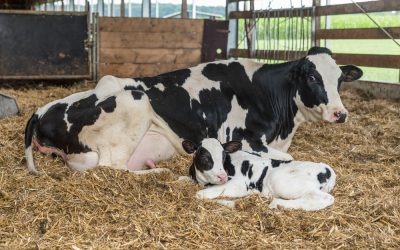D.Temple, E.Mainau, X.Manteca
The quality of stockmanship has an important effect on animal welfare and performance. Indeed, the attitude of the stockpersons when interacting with their animals mostly determines whether cattle are more or less fearful of people. In turn, fear affects milk production and also has pronounced negative effects on animal welfare.
Fear is defined as an unpleasant emotional experience caused by a stimulus that the animal perceives as a threat. In general, two kinds of stimuli can cause fear. Firstly, very intense sensory stimuli, such as noise, trigger a fear response without involving a learning process. Secondly, animals may learn to associate a neutral stimulus, such as humans, with a negative experience such as slapping, shouting or pushing due to a conditioning learning process. Moreover, according to some authors, domesticated animals may perceive humans as predators, and to a certain extent, they would be “predisposed” to associate human presence with negative stimuli. Additionally, fear is also affected by the genetic make-up of the animals and several studies have shown that fear has a medium to high heritability.
Pheromones play an important role in communication between cows and one pheromone which is particularly relevant here is the so-called alarm pheromone. In a frightening situation, cows secrete a volatile molecule or set of molecules (which are synthesized in the cutaneous glands located between the hooves) that induce fear and stress to other cows. So, a situation that causes fear in one cow may affect the entire cow herd.
Fear triggers a set of behavioural – mainly, the flight response- and physiological changes. In general, the physiological changes associated with fear are similar to the stress response and have negative effects on feed intake, rumination, milk production and fertility. Fear response inhibits the synthesis and release of oxytocin, which is responsible for the milk ejection reflex and this largely explains the importance of human-animal interaction in the milking parlour.
“The attitudes of the stockpersons when interacting with their animals are amenable to change, so stockperson training can improve human-animal relationship on cattle farms”
Studies published to date in dairy cows indicate that the most important parameter that determines the cow’s fear response of humans is the percentage of negative interactions over the total number of interactions between the farmer and their animals. The most frequent negative interactions are pushes and hits when animals are moved to the milking parlour. On the contrary, positive interactions include patting or touching the cow gently and resting the hand on the back of the cows during milking. In addition, it is also interesting to note that rough handling when cows are moved to the milking parlour greatly contributes to the development of severe lameness in dairy cows.
Animals that are regularly handled in a positive way usually show less fear of humans than those that have reduced contact with humans. This results not only in a less agitated behaviour when cows are close to humans, but also in a lower heart rate and reduced plasma cortisol concentrations, which are indicative of a lower stress response.
The most frequent interaction between cows and the stockpersons occurs during milking and when the cows are moved to / from the milking parlour. Moving the animals can be stressful, especially if it is done in an inappropriate way or the facilities are not adequate. The following figure shows the recommended position of the handler to drive cows in a gentle way.
Recommended handler position for driving cattle (from Grandin, 1980)
flight zone = area that if encroached upon by humans causes escape behaviour
- position A = outside the flight zone
- position B = inside the flight zone
- From position A to B, the handler exerts a “pressure” on the animal to move
point of balance = the animal will move forward if the handler walks behind the point and backward if the handler walks beyond the point
blind spot = area where the animal cannot see the handler

The quality of the human-animal relationship may be measured through the so-called “flight distance” test. This must be done by a person unfamiliar to the cows and the test is carried out when the animals are feeding. The person doing the test should approach the cow slowly starting at a distance of 2 meters. The distance between the hand of the person and the cow muzzle when the cow withdraws is recorded and the on-farm average should ideally be less than 50 cm. The number of cows that should be tested depends on the size of the farm and, for example, if the number of cows per pen is between 100 and 150, about 50-60 cows per pen should be assessed.



